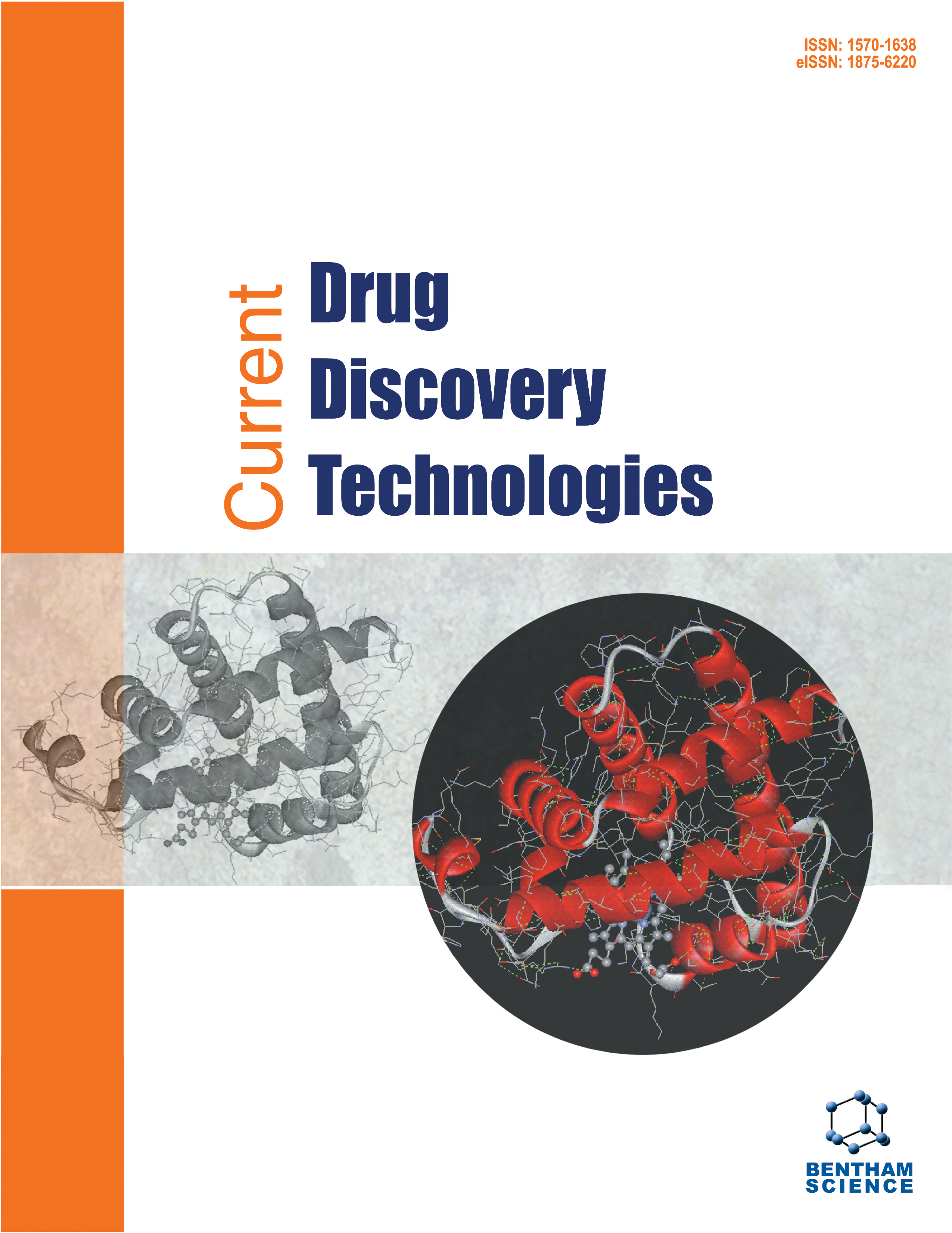- Home
- A-Z Publications
- Current Drug Discovery Technologies
- Previous Issues
- Volume 3, Issue 2, 2006
Current Drug Discovery Technologies - Volume 3, Issue 2, 2006
Volume 3, Issue 2, 2006
-
-
The Nuclear Overhauser Effect in the Lead Identification Process
More LessAuthors: Marilisa Leone, Hudson H. Freeze, Chui Sien Chan and Maurizio PellecchiaIn the past several years nuclear magnetic resonance (NMR) spectroscopy has emerged as a valuable tool in the drug discovery field. In such context, several NMR-based techniques have been developed aimed at the identification and subsequent optimization of novel binders for a given protein target. Among the different NMR approaches, those relying on the transferred Nuclear Overhauser Effect (tr-NOE) appear to be Read More
-
-
-
Mechanism Study of N-Dephenylation Mediated through a N-para-Hydroxy Metabolite
More LessAuthors: Jianyao Wang, William DeMaio, Appavu Chandrasekaran, Li Shen, Alvin C. Bach II, JoAnn Scatina and Rasmy TalaatA P450 catalyzed N-para-hydroxy metabolite was suggested to be a prerequisite for N-dephenylation occurrence. Although two mechanisms have been proposed to describe this process as a consequence of either a chemical degradation or P450 lead epoxidation of the hydroxy metabolite, direct evidence has not been demonstrated. In this study, we started with a novel technique using a dipeptide, Lys-Phe, to trap the bypr Read More
-
-
-
NMR-Based Quality Control Approach for the Identification of False Positives and False Negatives in High Throughput Screening
More LessAuthors: Claudio Dalvit, Dannica Caronni, Nicola Mongelli, Marina Veronesi and Anna VulpettiThe quality of the data generated in a high throughput screening (HTS) run is fundamental for selecting bona fide inhibitors and for ensuring the capture of the full richness of inhibitors present in a chemical library. For this purpose a quality control filter based on three one dimensional (1D) proton NMR experiments is proposed. The approach called SPAM (Solubility, Purity and Aggregation of the Molecule) Filter requires the a Read More
-
-
-
Novel Anti-bacterials Against MRSA: Synthesis of Focussed Combinatorial Libraries of Tri-Substituted 2(5H)-Furanones
More LessMucobromic and mucochloric acid were used as building blocks for the construction of a chemical combinatorial library of 3,4,5-trisubstituted 2(5H)-furanones. With these 2 butenolide building blocks, and eight alcohols a sublibrary of 16 dihalogenated 5-alkoxy-2(5H)-furanones was prepared. This sublibrary of 5-alkoxylated furanones was reacted with 16 amines generating a full size focussed combinatorial library of Read More
-
-
-
Selective Targeting of Liposomes to Macrophages Using a Ligand with High Affinity for the Macrophage Scavenger Receptor Class A
More LessMacrophages play an important role in inflammatory processes and are crucially involved in the onset and progression of atherosclerosis and tumorigenesis. Therefore, macrophages are regarded as an excellent target for therapeutic intervention. Since the scavenger receptor class A (SRA) is highly expressed on macrophages, we developed in the present study an SRA-specific particulate drug carrier by providing phos Read More
-
-
-
Protein Conformational Diseases: From Mechanisms to Drug Designs
More LessAuthors: Jin-Chung Lin and Hsuan-Liang LiuAmyloidosis comprises a group of diseases characterized by the deposition of insoluble protein fibrils in specific organs and includes several serious medical disorders, such as Alzheimer's disease, prion-associated transmissible spongiform encephalitis, and type II diabetes. Despite the structural dissimilarity between the soluble proteins and peptides, these fibrils exhibit similar morphologies under electron microscopy with a char Read More
-
Volumes & issues
-
Volume 22 (2025)
-
Volume 21 (2024)
-
Volume 20 (2023)
-
Volume 19 (2022)
-
Volume 18 (2021)
-
Volume 17 (2020)
-
Volume 16 (2019)
-
Volume 15 (2018)
-
Volume 14 (2017)
-
Volume 13 (2016)
-
Volume 12 (2015)
-
Volume 11 (2014)
-
Volume 10 (2013)
-
Volume 9 (2012)
-
Volume 8 (2011)
-
Volume 7 (2010)
-
Volume 6 (2009)
-
Volume 5 (2008)
-
Volume 4 (2007)
-
Volume 3 (2006)
-
Volume 2 (2005)
-
Volume 1 (2004)
Most Read This Month
Article
content/journals/cddt
Journal
10
5
false
en


